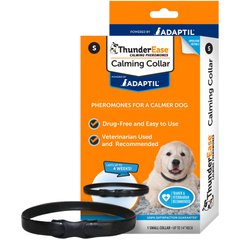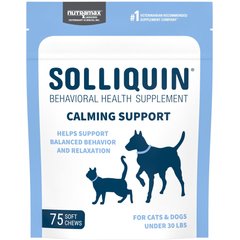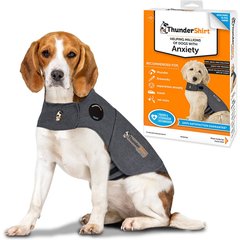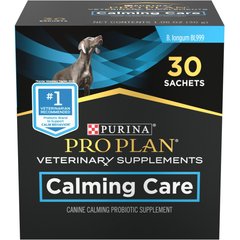Why Do Dogs Roll in Poop?
It’s a common scenario—one that you’ve probably experienced before.
You’re on a walk or hike with your dog. You look down, and before you know it, your dog is rolling around on something. And it happens to be poop. Your dog rolled in poop right before you were ready to pop in the car for a long ride home. (This is actually what happened to me and my dog Burgundy after an overnight backpacking hike.)
This is probably not the first time your dog has rolled in something smelly, either. So why do dogs roll in poop, and how can we stop it?
Is It Normal For Dogs to Roll in Feces?
In many ways, rolling in poop is, indeed, just a dog thing. It is extremely common, and most dogs usually indulge in this behavior at the most inconvenient times—right after a bath, just before company is coming, or as you’re on your way out the door. It is not only common, but also normal. Even wild dogs such as wolves and foxes roll in fecal matter of other animals.
Shop Toys, Training and More
- ThunderEase Powered by ADAPTIL Calming Pheromone Collar for Dogs, Small, up to 14-in neck$19.99Chewy Price
- Nutramax Solliquin Soft Chew Calming Behavioral Health Supplement for Small/Medium Dogs & Cats, 75 count$19.99Chewy Price
- ThunderShirt Classic Anxiety & Calming Vest for Dogs, Heather Grey, Medium$41.64Chewy Price
- Purina Pro Plan Veterinary Diets Calming Care Liver Flavored Powder Calming Supplement for Dogs, 30 count$33.99Chewy Price
Reasons Why Dogs Roll in Poop
Here are three common reasons your dog rolls in poop.
They like the smell.
This one might be hard to accept, but it does seem that dogs might actually just like the smell of other animal’s fecal matter. Think of it like humans putting on perfume—for some folks, the stronger the scent, the better. Dogs seem to be no different in this regard.
Many dogs will spend plenty of time when out for a walk just looking for the most disgusting thing possible to roll in. Other dogs, like my dog Toupe, may relish rolling in anything dead. Something as simple as a roadkill earthworm might induce your dog to roll. There is no accounting for taste when it comes to dogs rolling in things.
They are covering up their own natural scent.
Many people feel that, as predators, wild dogs have an advantage when hunting if they don’t smell like a coyote, for example. Hiding their identity in this respect might give them a tactical advantage.
Although this may be the case, some studies have shown that wild animals, when given the choice, will roll in things that are innately foreign to them, such as perfume and motor oil. Covering yourself in these strong scents doesn’t seem like a really good strategy for hiding from your prey.
They’re telling the story of where they’ve been.
Think of this like bringing postcards home from your vacation. When a dog returns to their pack, they are bringing back the smells of the places where they’ve spent time. This allows the other members of the pack to follow the trail back to the source and to any food that was found nearby. So in a way, rolling in feces is a form of communication amongst a pack—sort of the dog version of a social media post.
How Can You Stop a Dog From Rolling In Poop?
For many pet parents, this may be the million dollar question. They aren’t as interested in why the dogs do it, but more so in how to stop it. Unfortunately, this can be an extremely difficult lesson to teach.
If your dog is on-leash, it’s much easier. Simply lead your dog away from the offending area, and the opportunity never presents itself. If your dog is off-leash, however, the challenges mount.
Many behaviorists recommend teaching your dog a command called “leave it” in which your dog learns to not touch the object. This training can begin in the house with an item such as a sock, which is interesting, but off-limits.
You can gradually increase the value of the item up to treats, where your dog is not allowed to approach until you release the “leave it” condition by giving another cue, such as “OK,” which tells your dog they may now take the treat.
Once your dog reliably follows the “leave it” cue in the house, you can take the training (and interesting objects!) out into the yard with your dog on-leash, and with time, progress to training off-leash. I have found this cue to be useful with my own dogs in a lot of different circumstances.
Once you have a way to tell your dog to not touch the offending poo, the trick becomes timing. Most dogs will tell you in one form or another that they are getting ready for the deep dive. If you watch closely, you will learn what your dog’s behaviors are, but for many animals, they start to roll with their head and progress to the whole-body roll.
Often, they will have a particular posture or behavior; for example, sniffing intensely at an area, then lightly shaking their head before twisting their face to one side and rolling into the offensive pile.
Right when you see your dog start the sniffing and headshaking behavior, this would be the key time to give the “leave it” cue.
Some dogs are just intrepid poo rollers, and it may never be possible to have an entirely “clean record” for these dogs. But with patience, close observation, and some training, you might be able to minimize the number of unexpected baths.
I can tell you that after my dog Burgundy rolled in poop on our hike, despite a dip in the stream, that was a long ride home that I will never forget!
Featured Image: iStock.com/alexei_tm




